Yachts have long been symbols of luxury and adventure on the high seas. But what exactly constitutes a yacht? Is it defined by its size, its amenities, or something else altogether? In this article, we’ll delve into the world of yachting to answer the burning question: What size boat is considered a yacht?
Yachting is not merely about sailing; it embodies a lifestyle of freedom, sophistication, and exploration. From the sleek lines of a sailing yacht slicing through the waves to the opulent interiors of a motor yacht, these vessels offer a unique blend of elegance and excitement.
In the following sections, we’ll explore the different categories of yachts, the factors that determine their size, legal definitions, popular sizes, benefits, costs, maintenance considerations, and environmental impact. Whether you’re a seasoned sailor or a curious landlubber, join us on this journey as we navigate the fascinating world of yachting.
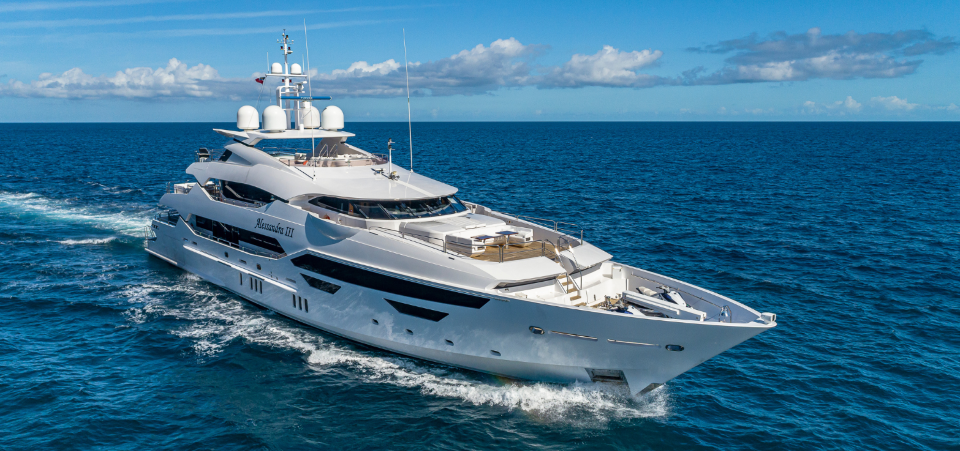
Defining a yacht
A yacht is more than just a boat; it’s a floating retreat, a sanctuary on the water. But what distinguishes a yacht from other vessels? While there is no universally accepted definition, yachts are generally characterized by their recreational and leisure-oriented design. Unlike commercial ships, which are built for transportation or commerce, yachts are crafted with comfort, luxury, and style in mind. At the heart of every yacht is the desire for adventure and exploration. Whether it’s cruising along the coast, anchoring in secluded coves, or racing against the wind, yachts offer unparalleled freedom and flexibility to their owners and guests.
Yachts come in various shapes, sizes, and configurations to cater to different preferences and purposes. From sleek and nimble sailing yachts to powerful and spacious motor yachts, there’s a yacht for every taste and lifestyle. But beyond their physical attributes, what truly sets yachts apart is the experience they provide. Whether you’re savoring a gourmet meal prepared by a private chef, lounging on the sun-drenched deck with a cocktail in hand, or diving into crystal-clear waters teeming with marine life, yachting offers a level of luxury and indulgence that is unmatched by any other form of travel.
In the next section, we’ll explore the various categories of yachts and delve deeper into what sets each type apart. So sit back, relax, and let your imagination set sail as we embark on this journey into the world of yachting.
Categories of yachts
Yachts come in a wide range of sizes, styles, and capabilities, catering to different preferences and purposes. Understanding the various categories of yachts can help prospective buyers or enthusiasts make informed decisions based on their needs and desires.
Small yachts
Small yachts, also known as “day sailers” or “weekenders,” typically range from 20 to 30 feet in length. These compact vessels are designed for short excursions along the coast or on inland waterways. Despite their modest size, small yachts offer a charming and intimate cruising experience, perfect for couples or small families looking to escape the hustle and bustle of everyday life.
Medium-sized yachts
Medium-sized yachts fill the gap between small day sailers and larger superyachts, spanning from 30 to 80 feet in length. These versatile vessels strike a balance between comfort and manageability, making them popular choices for both experienced sailors and novice enthusiasts. With spacious cabins, ample deck space, and a range of onboard amenities, medium-sized yachts offer the perfect blend of performance and comfort for extended cruising or entertaining guests.
Large yachts
Large yachts, also known as superyachts, are the epitome of luxury and extravagance on the water. Measuring over 80 feet in length, these floating palaces spare no expense when it comes to opulence and indulgence. From multiple decks and lavish interiors to state-of-the-art amenities and recreational facilities, large yachts offer unparalleled comfort and convenience for their owners and guests. Whether it’s hosting lavish parties, exploring exotic destinations, or simply enjoying the finer things in life, large yachts provide an unmatched level of luxury and sophistication.
In the following sections, we’ll explore the factors that determine yacht size and delve deeper into the considerations that prospective buyers should keep in mind when choosing the right yacht for their needs and preferences. So whether you’re dreaming of setting sail on a small day sailer or cruising the world in a luxurious superyacht, there’s a yacht out there waiting to fulfill your every desire.
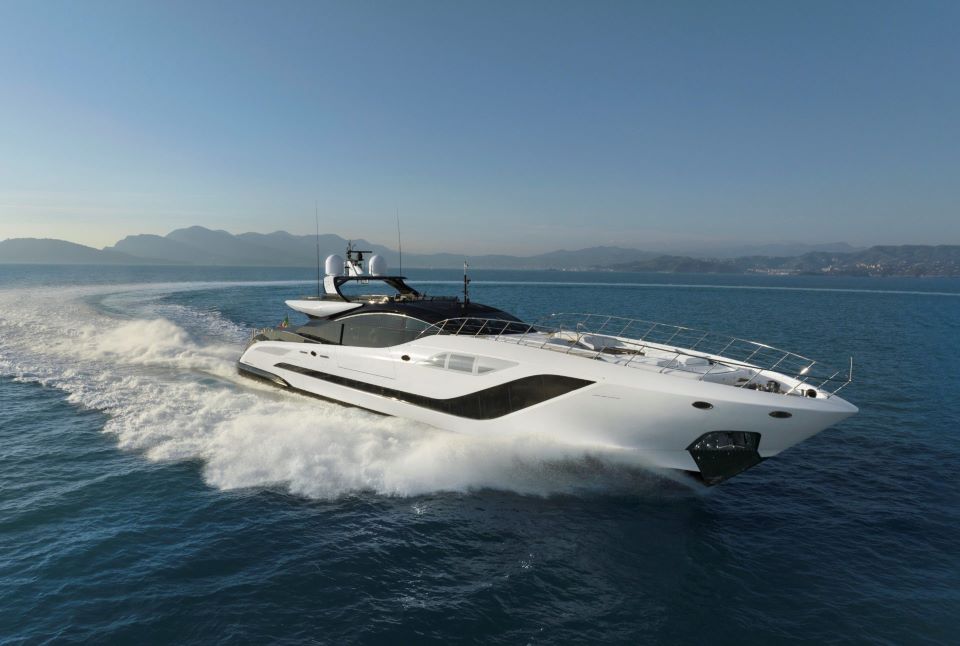
Factors determining yacht size
The size of a yacht is determined by various factors, each playing a crucial role in its design, capabilities, and overall appeal. Understanding these factors can help prospective buyers or enthusiasts make informed decisions based on their preferences and intended usage.
Length
One of the primary factors influencing yacht size is its overall length, typically measured from the tip of the bow to the stern. Longer yachts offer more interior space, allowing for larger cabins, expansive living areas, and additional amenities. However, they also require more experienced crew members to operate effectively and may have higher operating costs.
Beam
The beam of a yacht refers to its width at its widest point. A wider beam provides stability and increases interior space, allowing for more comfortable accommodations and enhanced onboard amenities. However, wider yachts may be more challenging to maneuver in tight spaces and may require specialized docking facilities.
Draft
Draft refers to the depth of a yacht’s hull below the waterline. Shallow-draft yachts are ideal for navigating in shallow waters, such as coastal areas, rivers, or inland waterways. Deeper drafts, on the other hand, provide better stability and seakeeping abilities in open seas. Prospective buyers should consider their intended cruising grounds and navigational requirements when choosing a yacht with the appropriate draft.
Gross Tonnage
Gross tonnage is a measurement of a yacht’s overall internal volume, including all enclosed spaces such as cabins, saloons, and engine rooms. While not directly related to size, gross tonnage can provide an indication of a yacht’s spaciousness and comfort level. Larger yachts typically have higher gross tonnage values, reflecting their greater interior volume and luxury amenities.
By considering these factors in combination with their personal preferences, budget, and intended usage, prospective buyers can select the perfect yacht size to suit their needs and lifestyle. In the following sections, we’ll explore how these factors apply to different categories of yachts and delve deeper into the considerations that should be taken into account when choosing the right yacht for your next adventure on the water.
Legal definitions
In addition to the physical characteristics that determine yacht size, various maritime authorities and regulatory bodies have established legal definitions and classifications for yachts. These definitions may vary from one jurisdiction to another and can have significant implications for yacht owners in terms of licensing, registration, and operational requirements.
For example, the International Maritime Organization (IMO) defines a yacht as a pleasure vessel that is used for non-commercial purposes, including recreation, sport, and leisure activities. However, individual countries may have their own specific regulations regarding yacht size, safety standards, and environmental compliance.
In the United States, for instance, the U.S. Coast Guard (USCG) categorizes recreational vessels based on length and assigns specific requirements for equipment, safety features, and operator qualifications. Yachts over a certain length may be subject to additional regulations, such as mandatory safety inspections or documentation requirements.
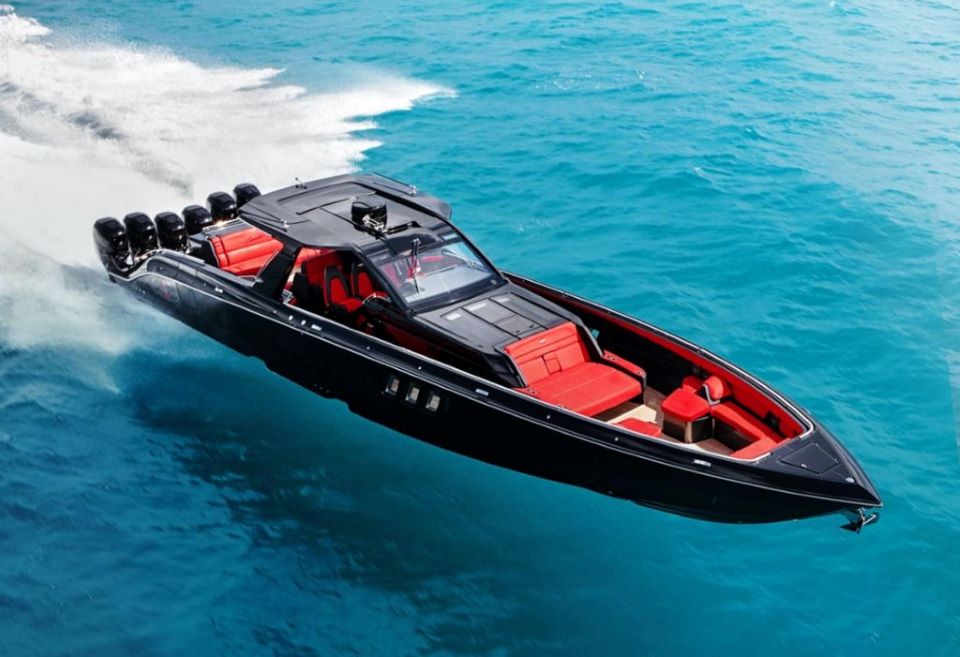
Popular yacht sizes
Yachts come in a myriad of sizes, each offering its own unique blend of performance, comfort, and luxury. Understanding the most popular yacht sizes can help prospective buyers or enthusiasts narrow down their options and find the perfect vessel to suit their needs and preferences.
40-foot cruisers
Cruisers measuring around 40 feet in length are popular choices for recreational sailors and weekend adventurers. These mid-sized yachts offer a good balance of comfort and maneuverability, making them ideal for coastal cruising or exploring inland waterways. With spacious cabins, ample deck space, and modern amenities, 40-foot cruisers provide a comfortable and enjoyable cruising experience for couples or small families.
60-foot motor yachts
Motor yachts in the 60-foot range are favored by those seeking a blend of luxury and performance. These versatile vessels offer ample interior space, stylish design, and powerful engines capable of cruising at higher speeds. Whether it’s island hopping in the Caribbean or entertaining guests in the Mediterranean, 60-foot motor yachts provide the perfect platform for enjoying life on the water in style and comfort.
100-foot superyachts
For those with a taste for the finer things in life, nothing beats the luxury and prestige of a 100-foot superyacht. These floating palaces offer unrivaled comfort, opulence, and extravagance, with multiple decks, lavish interiors, and a wealth of amenities to indulge even the most discerning of tastes. From hosting glamorous parties to embarking on extended voyages to exotic destinations, 100-foot superyachts provide an unmatched level of luxury and sophistication for their owners and guests.
Benefits of different sizes
Each yacht size offers its own set of advantages and benefits, catering to different preferences, lifestyles, and cruising needs. Understanding the benefits of different yacht sizes can help prospective buyers or enthusiasts make informed decisions based on their priorities and desired experiences.
Small yachts
Small yachts, such as day sailers or weekender vessels, offer several benefits:
- Affordability: Small yachts are often more affordable to purchase and maintain compared to larger vessels, making them accessible to a wider range of enthusiasts.
- Ease of handling: With their compact size and simpler systems, small yachts are easier to maneuver and operate, making them ideal for novice sailors or solo adventurers.
- Intimacy: Small yachts provide a more intimate and cozy cruising experience, allowing owners and guests to connect with the sea and each other on a deeper level.
- Versatility: Small yachts are versatile vessels that can navigate in shallow waters, explore secluded coves, and access remote destinations that larger vessels may not be able to reach.
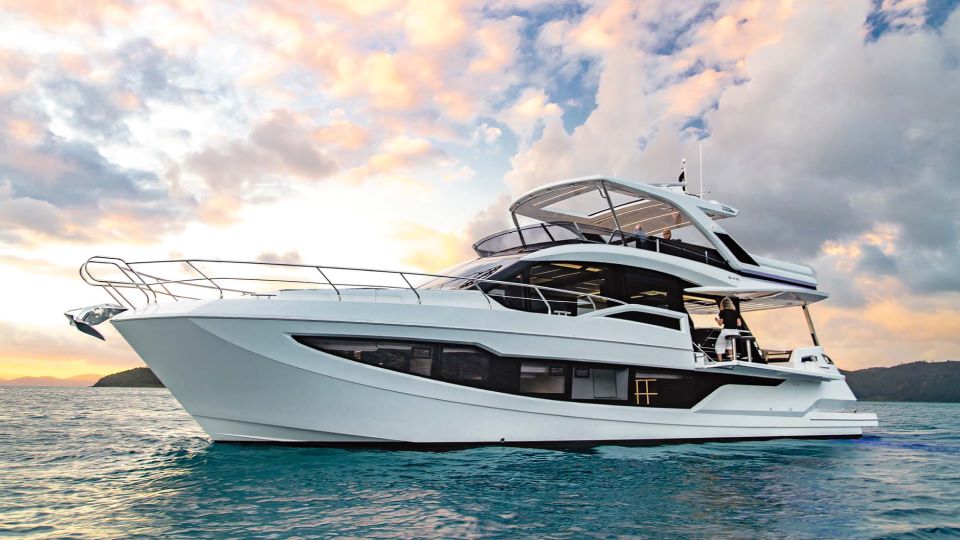
Medium-sized yachts
Medium-sized yachts offer a balance of comfort, performance, and versatility, making them popular choices for a wide range of enthusiasts:
- Comfort: Medium-sized yachts feature spacious cabins, ample deck space, and modern amenities, providing a comfortable and enjoyable cruising experience for couples or small families.
- Maneuverability: With their moderate size and responsive handling, medium-sized yachts are easy to maneuver in tight spaces and challenging conditions, giving owners confidence and peace of mind on the water.
- Flexibility: Medium-sized yachts are versatile vessels that can be used for a variety of cruising activities, from weekend getaways to extended voyages, allowing owners to tailor their experiences to their preferences and schedules.
Large yachts
Large yachts, also known as superyachts, offer unparalleled luxury, comfort, and prestige, setting them apart as the ultimate symbol of success and sophistication on the water:
- Luxury: Large yachts feature extravagant interiors, state-of-the-art amenities, and personalized service, providing owners and guests with a truly luxurious and indulgent cruising experience.
- Entertainment: Large yachts are floating entertainment hubs, with multiple decks, swimming pools, spas, cinemas, and other recreational facilities to keep guests entertained and pampered for days on end.
- Prestige: Owning a large yacht is a status symbol in itself, signaling wealth, power, and success to the world. Whether it’s hosting glamorous parties or rubbing elbows with the elite, large yacht owners enjoy a level of prestige and privilege that few can match.
In conclusion, the size of a yacht ultimately comes down to personal preference, lifestyle, and cruising needs. Whether you prefer the intimacy of a small yacht, the versatility of a medium-sized vessel, or the luxury of a large superyacht, there’s a yacht out there waiting to fulfill your every desire and whisk you away on the adventure of a lifetime.
Costs associated with owning different sizes
Owning a yacht is a dream come true for many, but it’s essential to understand that yacht ownership comes with various costs and expenses. The size of the yacht plays a significant role in determining these costs, as larger vessels typically incur higher expenses across the board. Here’s a breakdown of the costs associated with owning different sizes of yachts:
Small yachts
While small yachts are generally more affordable to purchase and maintain compared to larger vessels, they still come with their own set of costs, including:
- Purchase price: The initial cost of buying a small yacht can vary depending on factors such as age, condition, and manufacturer.
- Maintenance: Small yachts require regular maintenance to keep them in top condition, including cleaning, painting, engine servicing, and repairs.
- Mooring fees: Depending on where you moor your yacht, you may have to pay monthly or yearly fees for dockage, storage, and access to facilities.
- Insurance: Yacht insurance premiums are based on factors such as the vessel’s value, size, age, and intended usage.
- Operating expenses: This includes fuel, oil, dockage fees, maintenance supplies, and other day-to-day expenses associated with owning and operating a yacht.
Medium-sized yachts
Medium-sized yachts offer a balance of comfort and affordability, but they still come with significant costs, including:
- Purchase price: Medium-sized yachts typically cost more than small vessels due to their larger size and more extensive amenities.
- Maintenance: Like small yachts, medium-sized vessels require regular maintenance to ensure their safety, performance, and appearance.
- Crew salaries: Depending on the size and complexity of the yacht, you may need to hire professional crew members to operate and maintain the vessel.
- Insurance: Yacht insurance premiums for medium-sized vessels are higher than those for small yachts due to their increased value and risk exposure.
- Operating expenses: Medium-sized yachts have higher operating costs than small vessels due to their larger size, increased fuel consumption, and more extensive amenities.
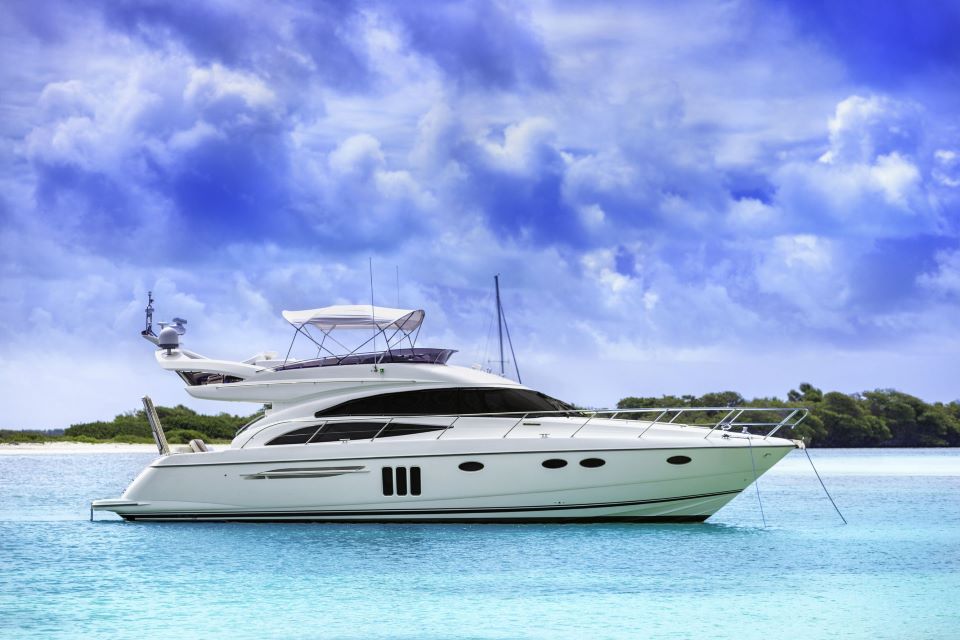
Large yachts
Large yachts, also known as superyachts, are the epitome of luxury and extravagance, but they come with equally extravagant costs, including:
- Purchase price: Large yachts are among the most expensive assets in the world, with prices ranging from tens of millions to hundreds of millions of dollars.
- Maintenance: Maintaining a large yacht requires a dedicated team of professionals, including engineers, technicians, chefs, and stewardesses, to keep the vessel in pristine condition.
- Crew salaries: Large yachts require a full complement of crew members to operate and maintain the vessel, including captains, engineers, deckhands, chefs, and stewardesses, with salaries ranging from tens of thousands to hundreds of thousands of dollars per year.
- Operating expenses: Operating a large yacht is a costly endeavor, with expenses including fuel, dockage fees, insurance premiums, provisioning, maintenance supplies, and other day-to-day costs.
- Upgrades and refits: Large yachts often undergo regular upgrades and refits to keep them in line with the latest trends and technologies, with costs running into the millions of dollars.
In conclusion, owning a yacht is a significant investment that requires careful consideration of the associated costs and expenses. Whether you opt for a small day sailer, a medium-sized cruiser, or a large superyacht, it’s essential to budget for the purchase price, maintenance, insurance, and operating expenses to ensure a smooth and enjoyable yachting experience. By understanding the costs associated with different sizes of yachts, prospective buyers can make informed decisions and embark on their yachting adventures with confidence and peace of mind.
Maintenance considerations
Proper maintenance is essential for keeping a yacht in top condition and ensuring the safety and comfort of its passengers and crew. Different sizes of yachts come with their own unique maintenance considerations, ranging from routine tasks to more complex repairs and upgrades. Here are some key maintenance considerations for yachts of different sizes:
Small yachts
Small yachts require regular maintenance to keep them in good working order and prevent issues from arising. Some key maintenance tasks for small yachts include:
- Cleaning: Regular cleaning of the hull, deck, and interior surfaces helps prevent the buildup of dirt, grime, and saltwater residue.
- Painting: Periodic painting of the hull and topsides helps protect the yacht from corrosion, fouling, and UV damage.
- Engine servicing: Routine servicing of the engine and other mechanical systems ensures reliable performance and prevents breakdowns.
- Electrical checks: Regular inspection of the electrical system helps identify and address any issues before they escalate into larger problems.
- Safety equipment checks: Periodic inspection of safety equipment such as life jackets, fire extinguishers, and emergency signaling devices ensures they are in good working condition and ready for use in case of an emergency.
Medium-sized yachts
Medium-sized yachts require more extensive maintenance compared to small vessels due to their larger size and more complex systems. Some key maintenance tasks for medium-sized yachts include:
- Hull maintenance: Regular inspection and maintenance of the hull, including cleaning, painting, and repairs, help prevent corrosion, osmosis, and other structural issues.
- Engine and machinery servicing: Regular servicing of engines, generators, and other mechanical systems ensures reliable performance and prevents breakdowns.
- Electronics upgrades: Periodic upgrades to navigation, communication, and entertainment systems help keep the yacht up to date with the latest technologies and improve safety and comfort.
- Interior refurbishment: Occasional refurbishment of the interior, including upholstery, carpets, and furnishings, helps keep the yacht looking fresh and inviting for guests.
- Safety drills: Regular safety drills and crew training help ensure that everyone on board knows what to do in case of an emergency and can respond quickly and effectively.
Large yachts
Large yachts, or superyachts, require the most extensive maintenance due to their size, complexity, and luxury amenities. Some key maintenance tasks for large yachts include:
- Comprehensive refits: Periodic refits and upgrades to the yacht’s systems, amenities, and interior spaces help keep it in line with the latest trends and technologies.
- Regular inspections: Frequent inspections of the hull, machinery, and systems help identify and address any issues before they escalate into larger problems.
- Crew training: Ongoing training and certification for the crew help ensure that they are skilled, knowledgeable, and capable of operating and maintaining the yacht to the highest standards.
- Environmental compliance: Compliance with environmental regulations and best practices, including waste management, fuel efficiency, and emissions reduction, helps minimize the yacht’s impact on the marine environment.
- Emergency preparedness: Comprehensive emergency preparedness plans and drills help ensure that the crew is prepared to respond effectively to any emergency situation, from medical emergencies to fire or flooding.
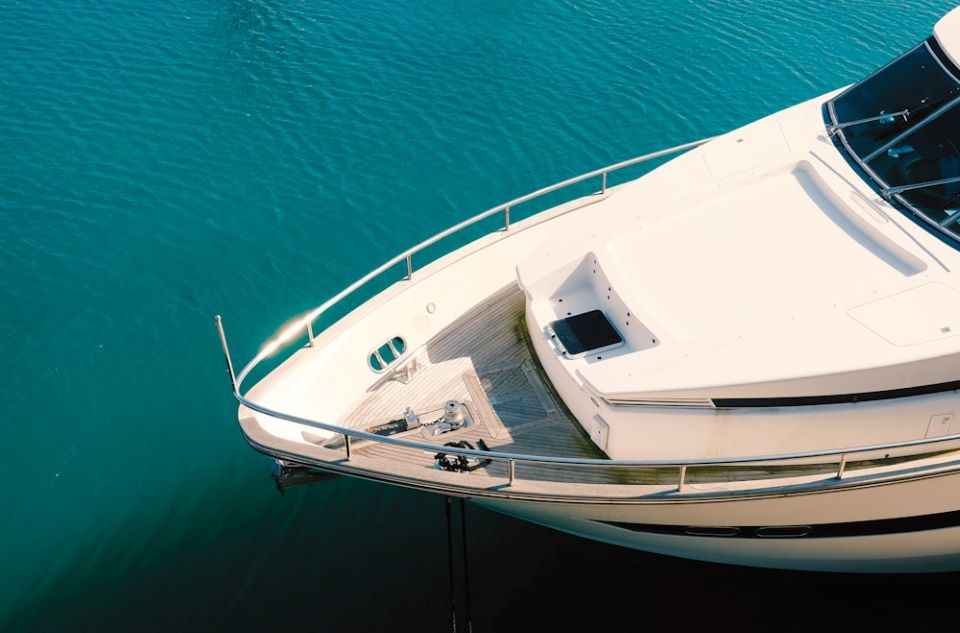
In conclusion, proper maintenance is essential for keeping a yacht in top condition and ensuring the safety and comfort of its passengers and crew. By understanding the maintenance considerations associated with different sizes of yachts, owners can develop comprehensive maintenance plans and schedules to keep their vessels in pristine condition and enjoy many years of safe and enjoyable cruising on the water.
Key Takeaways
- Yacht Classification: Yachts come in various sizes and types, from small sailing yachts to extravagant mega yachts, each offering different levels of luxury and amenities.
- Size Criteria: While there’s no strict size requirement to qualify as a yacht, boats typically need to exceed 30 feet in length to be considered as such.
- Personal Preference: The size of a yacht is often influenced by individual preferences, intended usage, budget constraints, and desired amenities.
- Regulatory Considerations: Regulations regarding yacht size vary across jurisdictions, encompassing registration, licensing, and safety standards.
- Cost Implications: Owning a yacht entails significant financial commitments, including acquisition costs, maintenance expenses, and operational outlays, which vary based on the size and features of the vessel.
- Social Status and Prestige: Yachts serve as status symbols, symbolizing affluence and social standing, with larger and more opulent yachts often associated with higher prestige.
Conclusion
Choosing the right size yacht is a decision that requires careful consideration of various factors, including budget, lifestyle, and intended usage. Whether you opt for a small day sailer for weekend getaways, a medium-sized cruiser for coastal cruising, or a large superyacht for ultimate luxury and prestige, there’s a yacht out there to fulfill your every desire and whim.
Yachting offers a unique blend of freedom, adventure, and luxury, allowing owners and guests to explore the world’s oceans and coastal areas in style and comfort. From the thrill of sailing on the open sea to the tranquility of anchoring in secluded coves, yachting provides endless opportunities for unforgettable experiences and cherished memories.
FAQs
1. What size boat is considered a yacht?
A yacht is generally considered to be any recreational vessel used for pleasure and leisure activities. While there is no strict definition based solely on size, yachts typically range from small day sailers to large superyachts measuring over 80 feet in length.
2. How do I determine the right size yacht for me?
The right size yacht depends on your preferences, budget, and intended usage. Consider factors such as the number of passengers, desired amenities, cruising grounds, and maintenance costs when choosing the size that best suits your needs and lifestyle.
3. What are the benefits of owning different sizes of yachts?
Each size of yacht offers its own unique benefits, from affordability and ease of handling with small yachts to luxury and prestige with large superyachts. Small yachts are more intimate and cost-effective, while larger vessels provide more space, amenities, and comfort for extended cruising and entertaining.
4. How much does it cost to own and maintain a yacht?
The costs of owning and maintaining a yacht vary depending on its size, age, condition, and usage. Small yachts are generally more affordable to purchase and maintain compared to larger vessels, but all yachts incur expenses such as purchase price, maintenance, insurance, mooring fees, and operating costs.
5. What environmental considerations should I keep in mind when owning a yacht?
Yacht ownership comes with environmental responsibilities, including minimizing fuel consumption and emissions, managing waste properly, and avoiding disturbance to marine habitats and wildlife. Implementing sustainable practices and supporting conservation efforts can help minimize the environmental impact of yachting.
